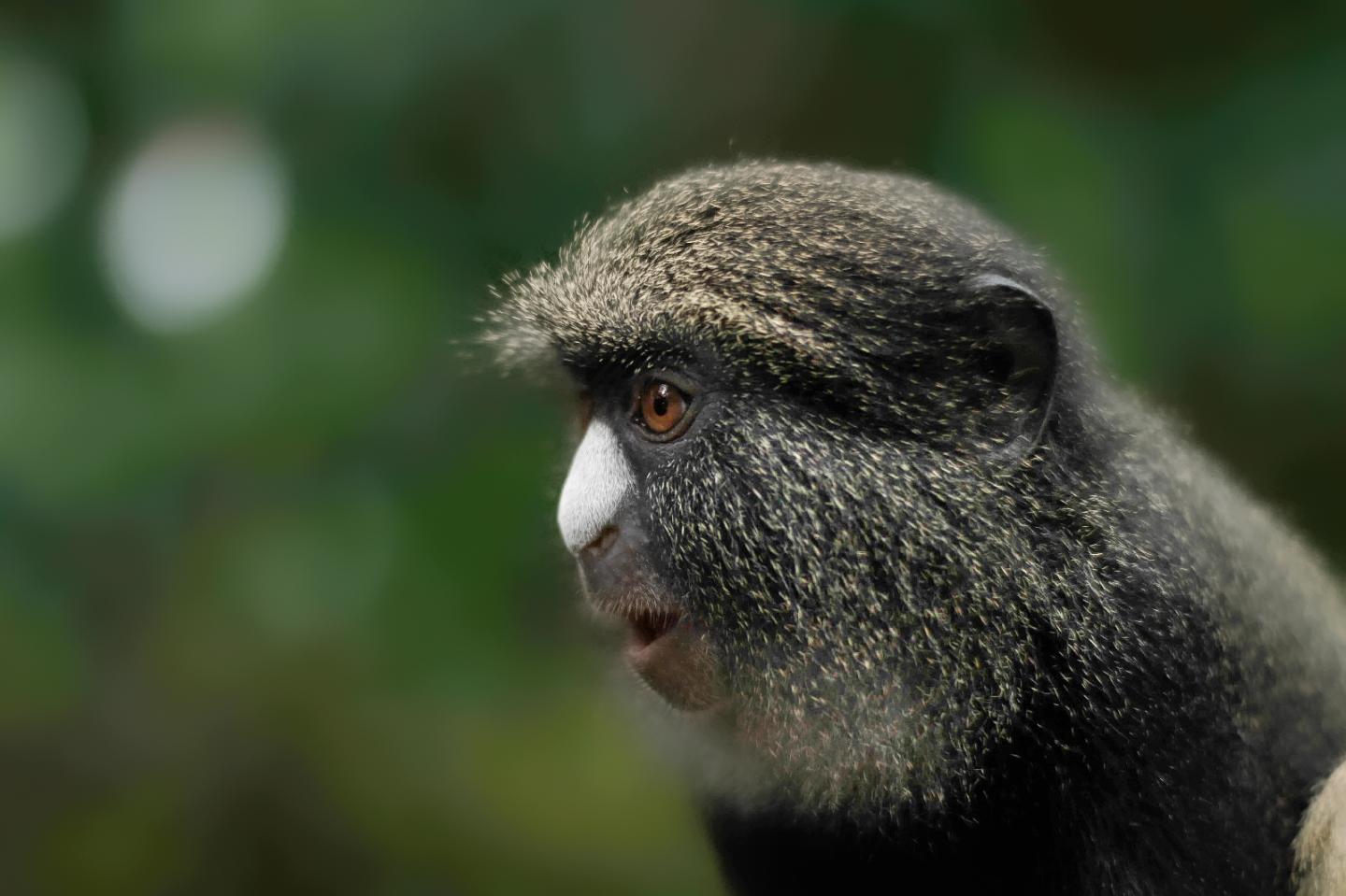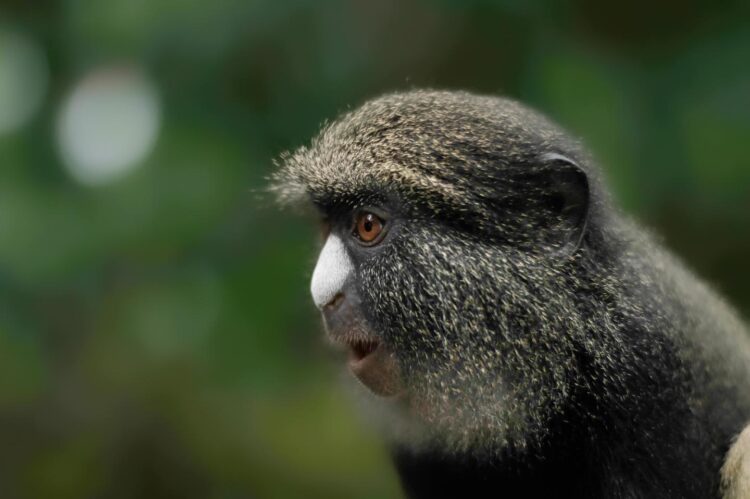Female putty-nosed monkeys use calls just to recruit males when certain predators are detected

Credit: C. Kolopp/WCS
BRAZZAVILLE, Republic of Congo (March 31, 2021) – Researchers with the Wildlife Conservation Society’s (WCS) Congo Program and the Nouabalé-Ndoki Foundation found that female putty-nosed monkeys (Cercopithecus nictitans) use males as “hired guns” to defend from predators such as leopards.
Publishing their results in the journal Royal Society Open Science, the team discovered that female monkeys use alarm calls to recruit males to defend them from predators. The researchers conducted the study among 19 different groups of wild putty-nosed monkeys, a type of forest guenon, in Mbeli Bai, a study area within the forests in Nouabalé-Ndoki National Park, Northern Republic of Congo.
The results promote the idea that females’ general alarm requires males to assess the nature of the threat and that it serves to recruit males to ensure group defense. Females only cease the alarm call when males produce calls associated with anti-predator defense. Results suggest that alarm-calling strategies depend on the sex of the signaler. Females recruit males, who identify themselves while approaching, for protection. Males reassure their female of their quality in predation defense, probably to assure future reproduction opportunities.
Males advertise their commitment to serve as hired guns by emitting general “pyow” calls while approaching the rest of their group – a call containing little information about ongoing events, but cues to male identity, similar as to a signature call. Hearing his “pyow” call during male approaches enables females to identify high quality group defenders already from a distance. This might contribute to long-term male reputation in groups, which would equip females to choose males that ensure their offspring’s survival most reliably.
Said the study’s lead author Frederic Gnepa Mehon of WCS’s Congo Program and the Nouabalé-Ndoki Foundation: “Our observations on other forest guenons suggest that if males do not prove to be good group protectors, they likely have to leave groups earlier than good defenders. To date, it remains unclear whether female guenons have a saying in mate choice, but our current results strongly suggest this possibility.”
In the course of this study, a new call type was consistently recorded named “kek.” They found that the males used the “kek” call when exposed to a moving leopard model created by researchers for field experiments. Previous studies of putty-nosed monkeys in Nigeria never reported “keks.” This new type of call could thus be population-specific or it could be uttered towards moving threats. If “kek” calls are population specific, this could suggest that different “dialects” exist amongst putty-nosed monkeys – a strong indicator for vocal production learning, which is fiercely debated to exist in the animal kingdom.
Said co-author Claudia Stephan Wildlife Conservation Society’s (WCS) Congo Program and the Nouabalé-Ndoki Foundation: “Sexual selection might play a far more important role in the evolution of communication systems than previously thought. In a phylogenetic context, what strategies ultimately drove the evolution of communication in females and in males? Might there even be any parallels to female and male monkeys’ different communication strategies in human language?”
The authors say that current results considerably advanced the understanding of different female and male alarm calling both in terms of sexual dimorphisms in call production and call usage. Interestingly, although males have more complex vocal repertoires than females, the cognitive skills that are necessary to strategically use simple female repertoires seem to be more complex than those necessary to follow male calling strategies. In other words, female putty-nosed monkeys’ alarms may contain little information, but they do so by purpose, namely to facilitate the manipulation of male behavior.
###
WCS (Wildlife Conservation Society)
MISSION: WCS saves wildlife and wild places worldwide through science, conservation action, education, and inspiring people to value nature. To achieve our mission, WCS, based at the Bronx Zoo, harnesses the power of its Global Conservation Program in nearly 60 nations and in all the world’s oceans and its five wildlife parks in New York City, visited by 4 million people annually. WCS combines its expertise in the field, zoos, and aquarium to achieve its conservation mission. Visit: newsroom.wcs.org Follow: @WCSNewsroom. For more information: 347-840-1242.
Media Contact
Stephen Sautner
[email protected]
Original Source
https:/
Related Journal Article
http://dx.





